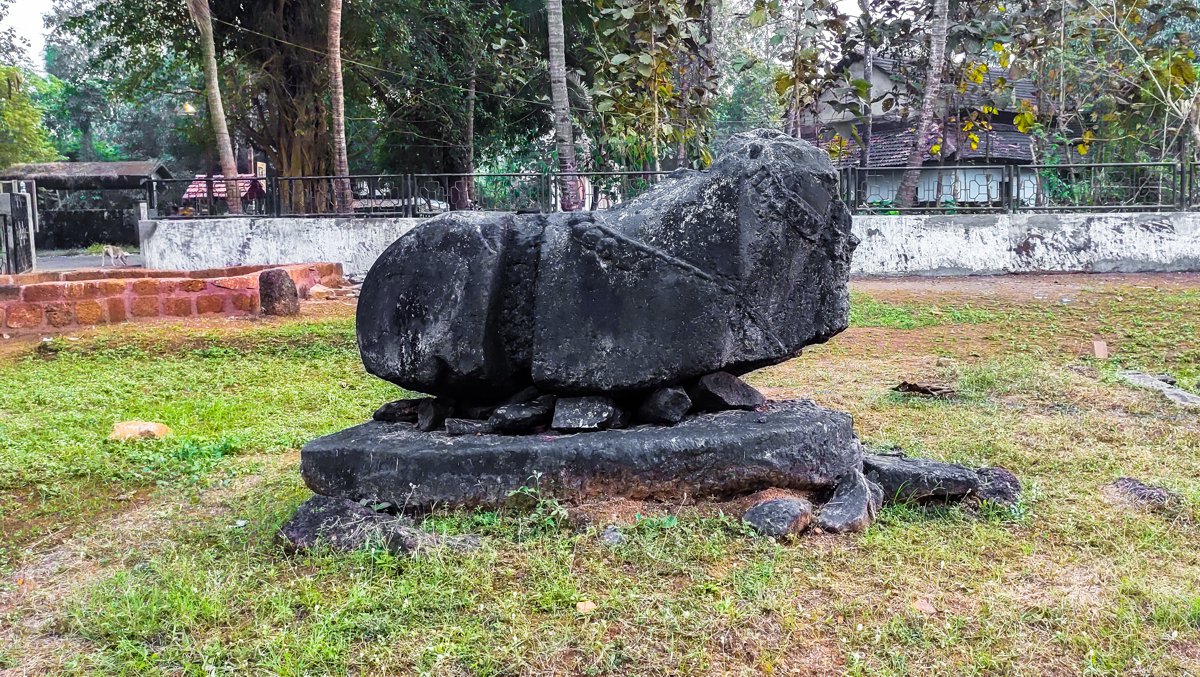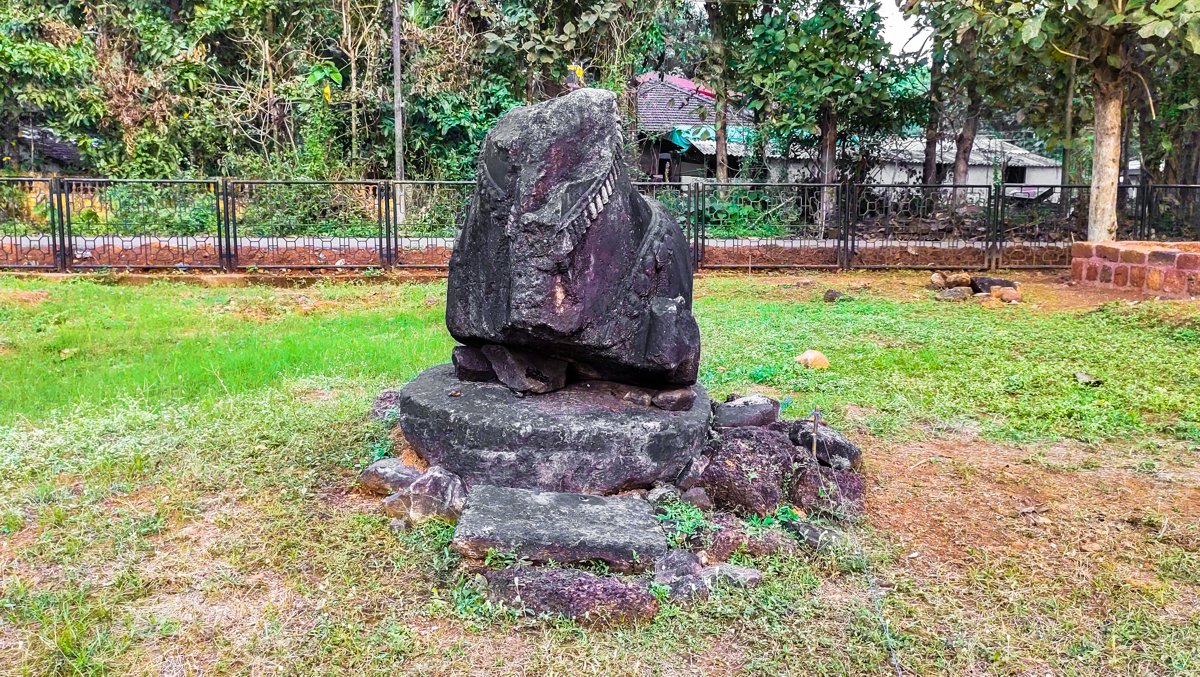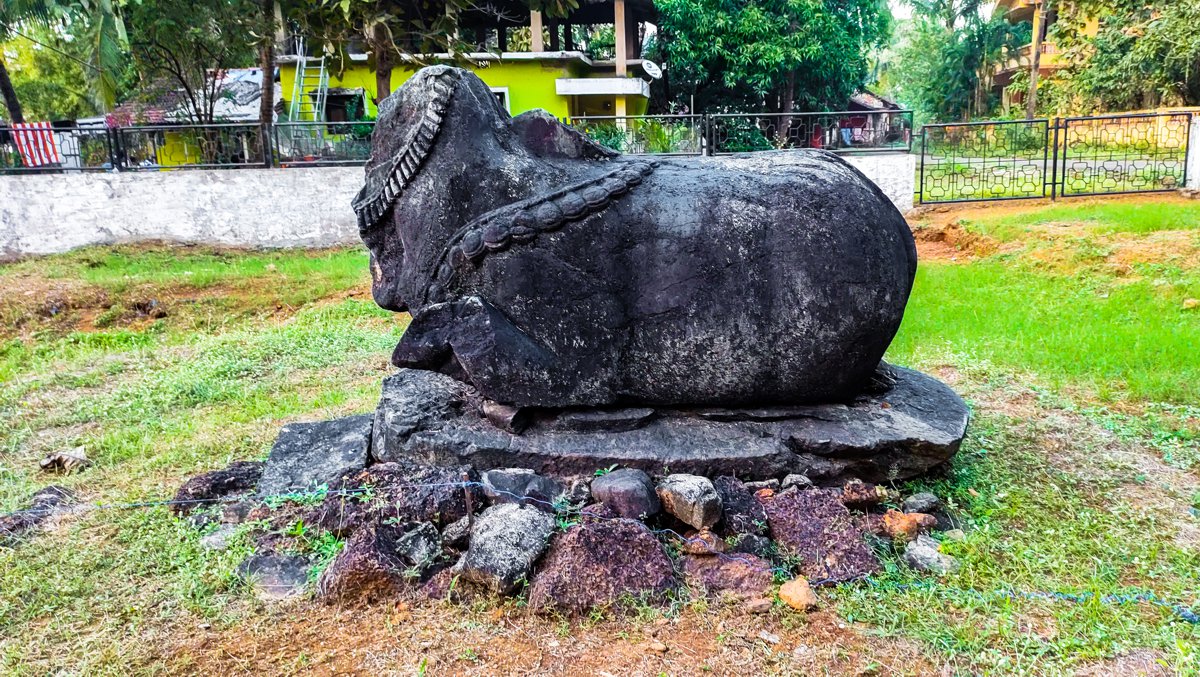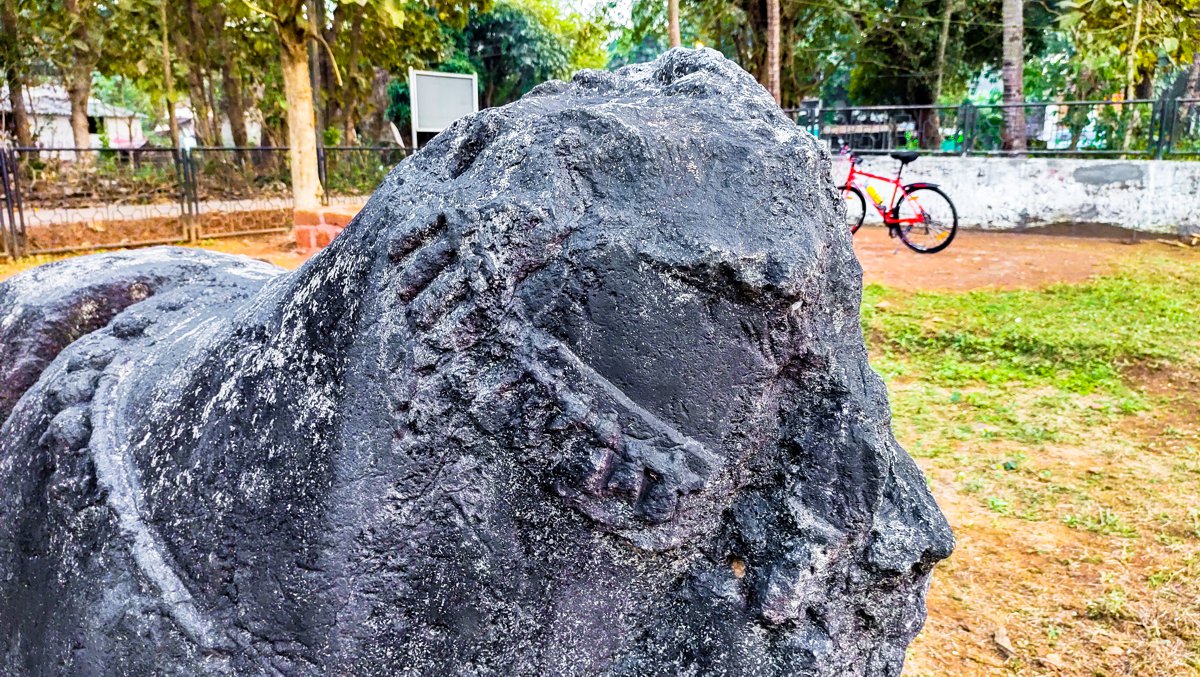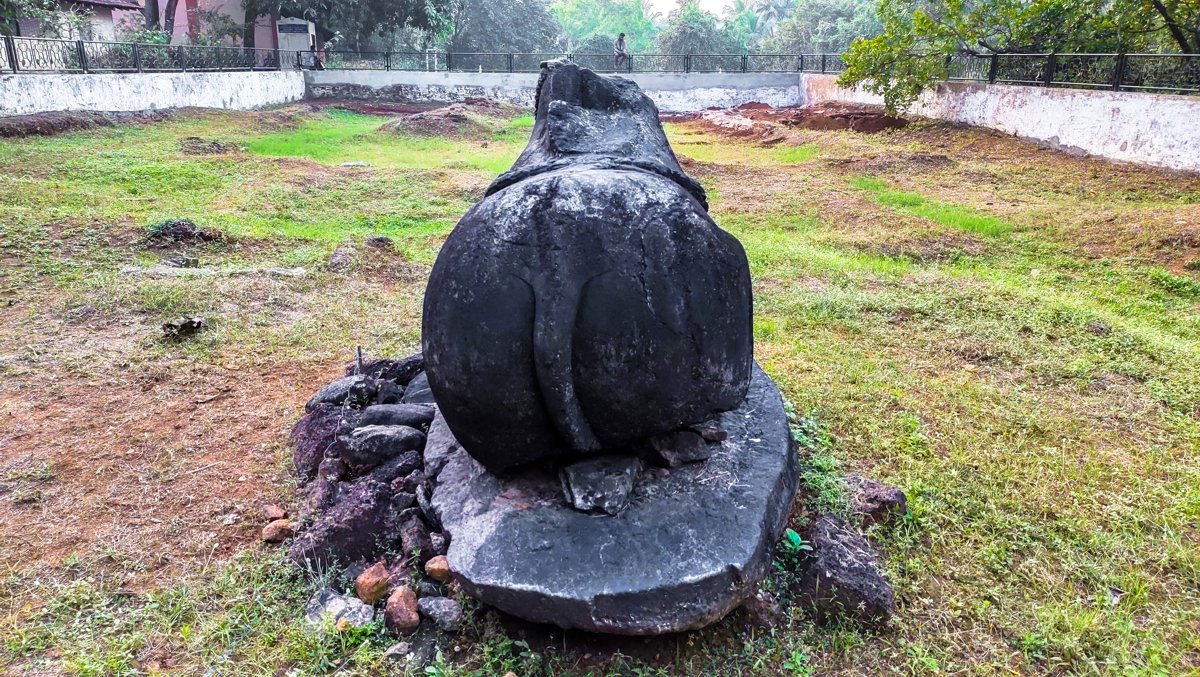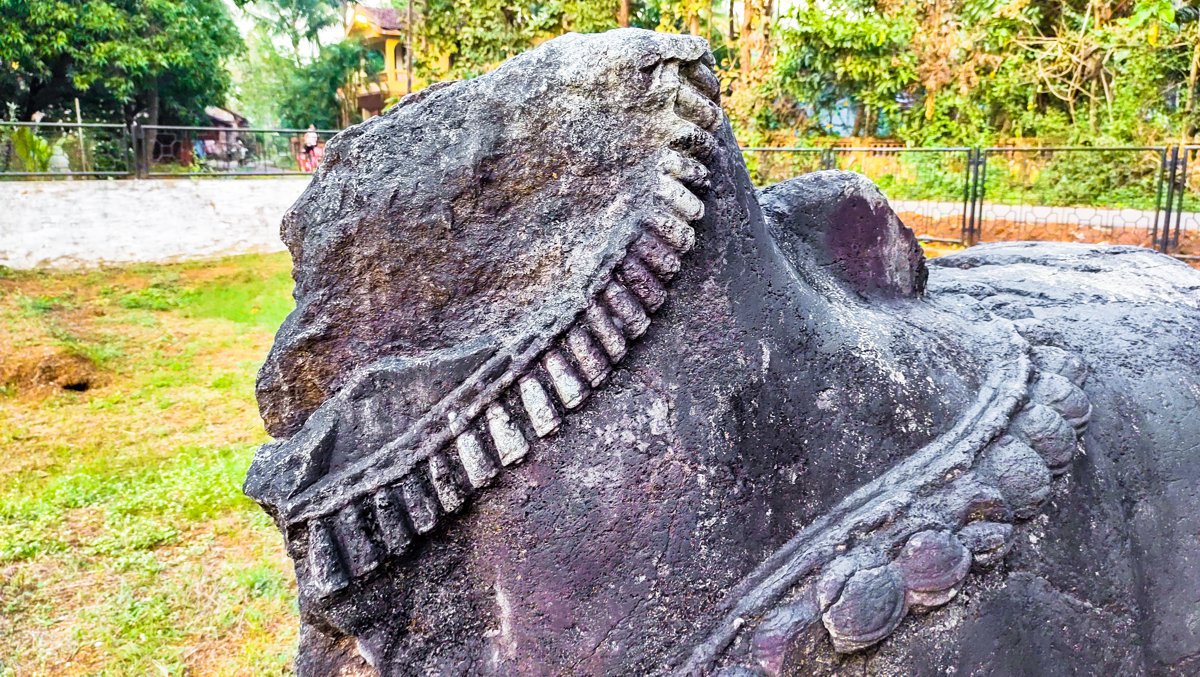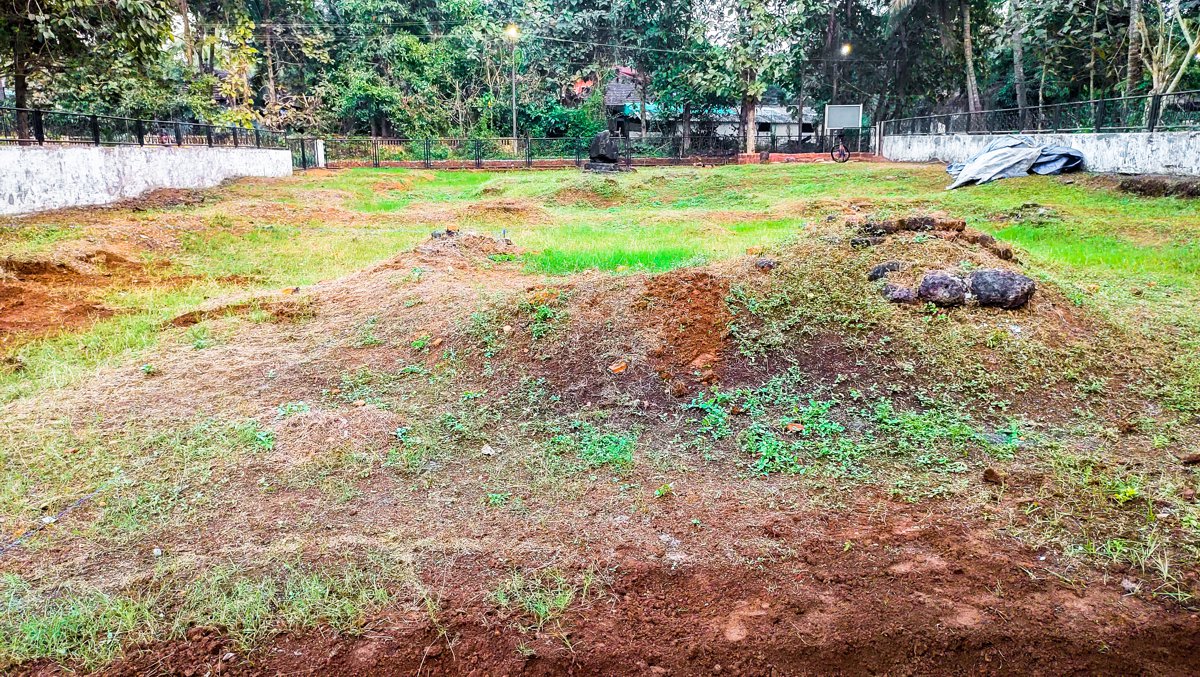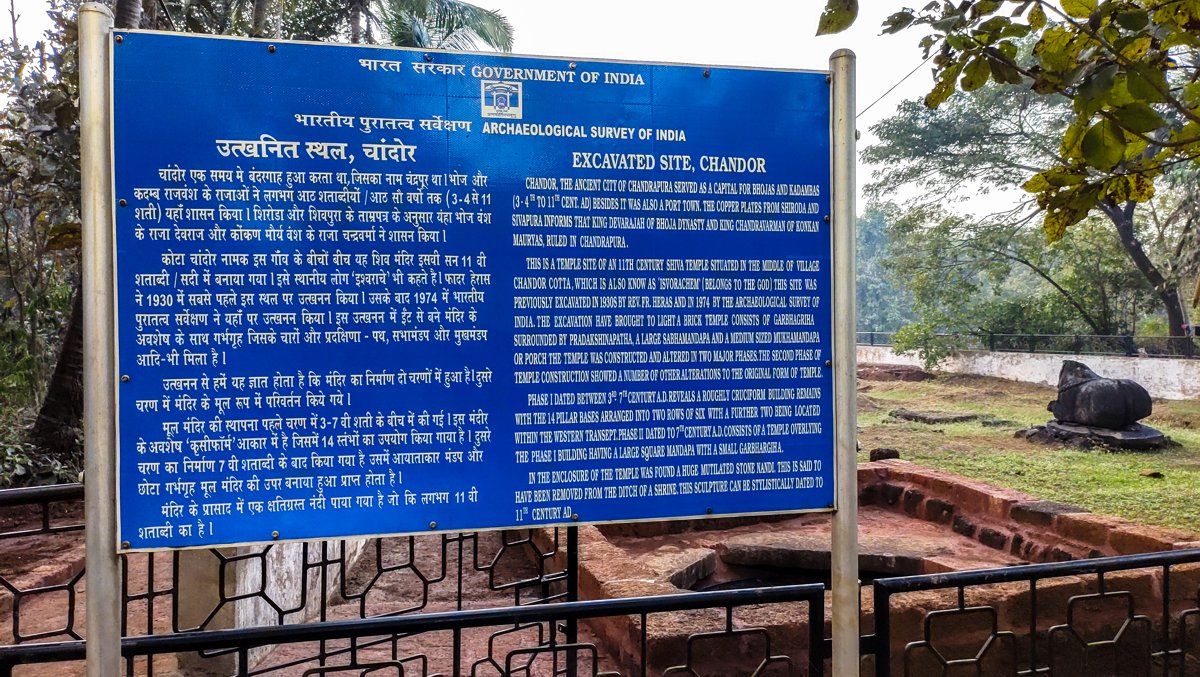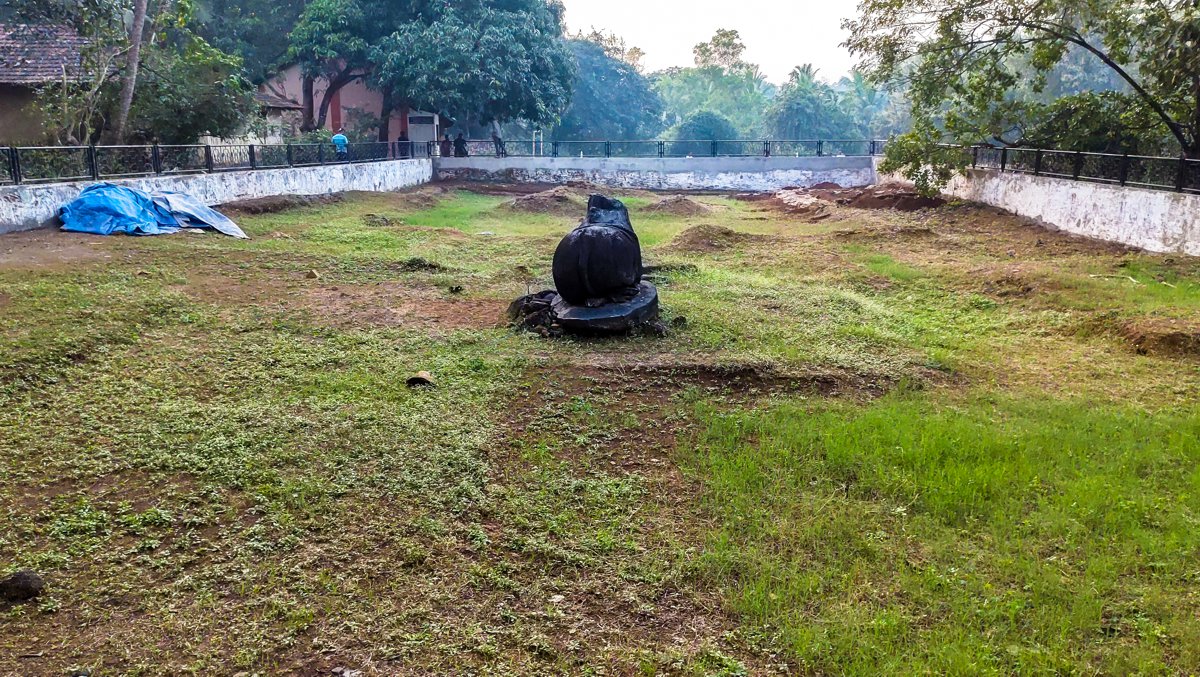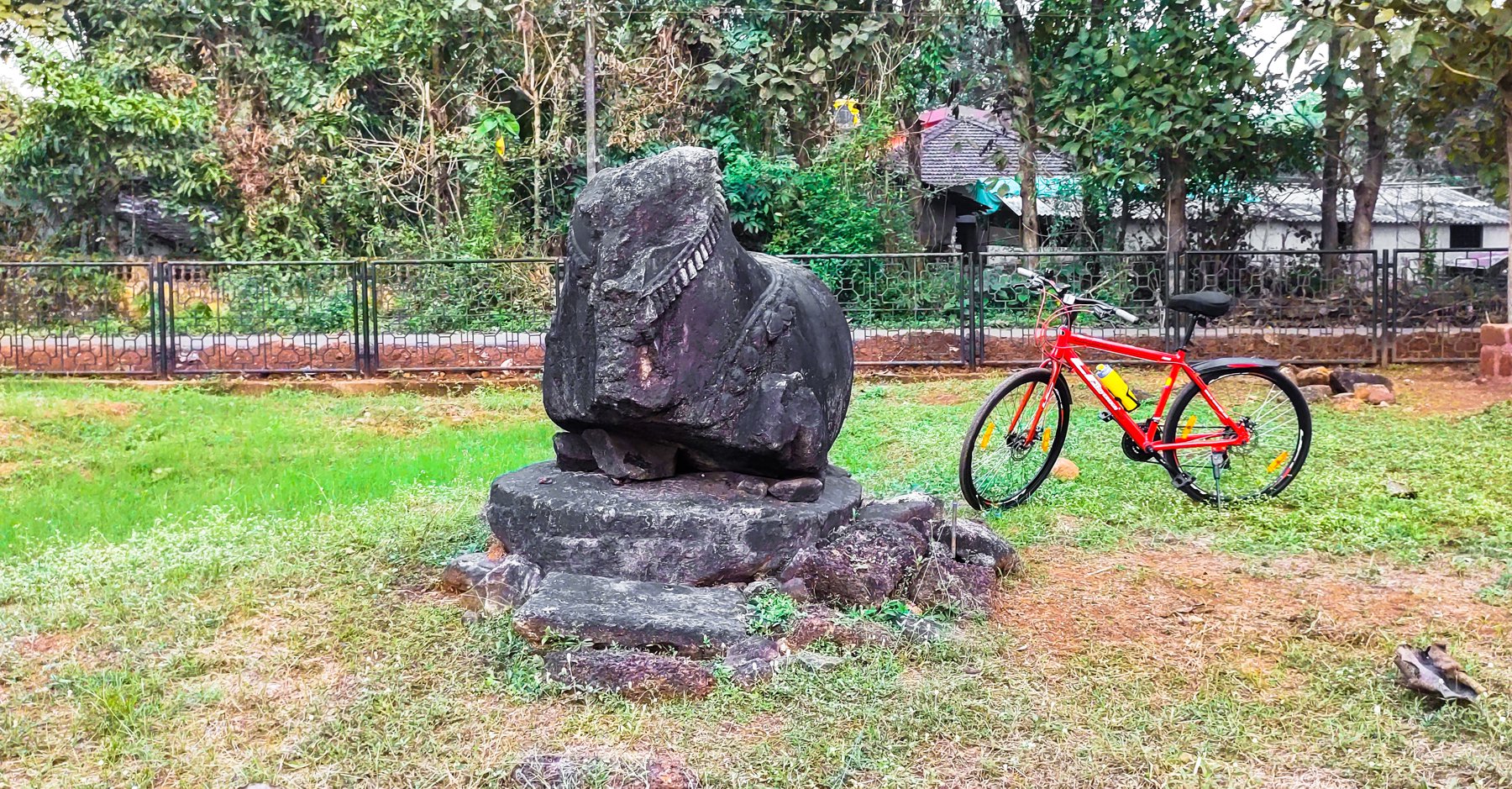
Present day Chandor was once the ancient city of Chandrapur, which served as the capital of Kadamba dynasty until the 11th century, before the rulers moved to Govepuri now known as Goa Velha.
In 1929, Fr. Heras a noted architect and historian began excavation in Chandor Cotta following an article written by Maria Ermelinda Stuart Gomes on Chandor after touring the village in 1920. At the excavation site he discovered the plinth of a temple and a very old and shattered stone-carved headless Nandi – Shiva’s bull.
The Nandi believed to be affected adversely by the 13th century Muslim raids on various temples of Goa dates back to the 7th century CE when Chandraditya was proclaimed as the ruler of the Konkan along with Chandrapur by his father, Pulakesin II, the great Chalukyan emperor.
According to a book ‘Village Goa authored by Dr. Olivinho Gomes he mentions that the Nandi bull is, said to be the second biggest in India after that of Mysore. It also mention that the Muslims after their invasion of the Kadambas cut out a large part of its stomach to see if it contained diamonds, pearls, or other precious stones, broke its mouth to see if there was any treasure hidden in it, chopped off the tail to see if they could find any precious stones in its arms. Seeing that it did not have anything in it, they broke its legs, dislodged it from the seat of stone and turned it up-side-down, to see if there was something underneath it, but without success.
This monument has been declared to be of national importance under the ancient monuments and Archaeological sites, is maintained by the Archaeological Survey of India (ASI).

